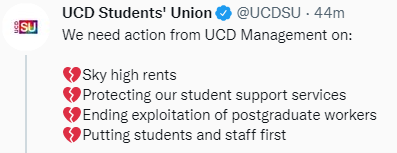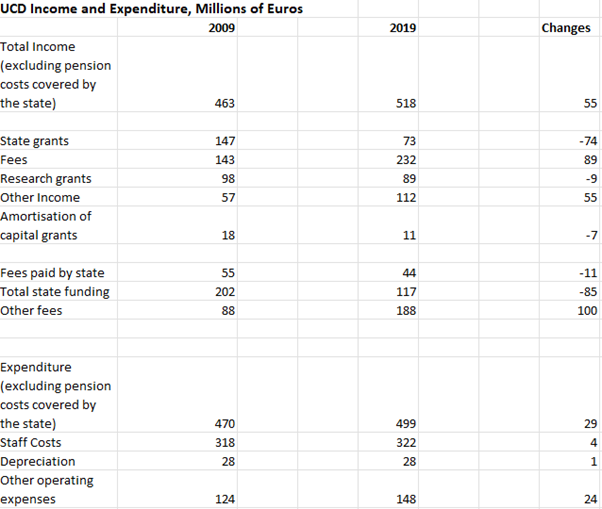I see that many UK universities are announcing they are staying mainly online for 2021-22, with only small group teaching happening in person. I am not going to judge whether this is the right policy for the upcoming year because public health is not my area of expertise. However, Manchester University have announced that this is a permanent change and I suspect many others are considering this option.
Personally, I think making decisions now to permanently get rid of in-person lectures would be a mistake, both on the substance of the issue and on the timing and processes for making a decision of this sort. A few thoughts below.
Educational Substance
I have been teaching online since March 2020 and have worked hard at it. After a period recording lectures without anyone listening live, I settled on an approach of teaching online at the time of my scheduled timetabled slots and also recording the lecture. Despite my initial fears, I think this has worked reasonably well and feedback I received from students has generally been positive and kind.
The positive feedback for this format reflects both the live element and the recorded element. For some students, it is very important to be able to participate in their lectures in a structured timetabled way and also to be able to interact with a lecturer during a live session. My undergraduate classes have large class sizes and I will admit that I get more questions online – via the chat box – then I ever did when I taught live. Asking questions in front of many class mates is intimidating for most people but typing a question into a chat box is not – the question can also be sent just to the lecturer, giving the student complete privacy.
For other students, the access to recordings of the lectures is hugely positive. Students have told me it’s great that they can pause and rewind the lectures, particularly when they are covering something technical and how they can listen to lectures while they are on a walk, if it is less technical.
But there are important downsides to not having in-person lectures. In online lectures, students do not turn their cameras on and it is difficult to insist that they do. This means lecturers cannot see whether they are being understood. Manchester University have “pledged to continue in-person teaching for lectures with an “interactive” element, such as question and answer sessions.” But all live teaching is interactive. When my students are in front of me, I can see how they are responding to what I am saying. I can see how many look a bit puzzled, I can tell if they are smiling at my bad jokes or if they are paying attention to a bit that I signal is very important. Chat box questions are fine but they are not a substitute for a lecturer’s ability to “read the room”.
Another important interaction that is lost is the ability to come up in person after class to talk to a lecturer. I run online office hours and have been pleased with the number of students that have used them. Indeed, I plan to retain this option when in-person classes return. But students are more likely to use the online hours to go over a number of issues on the course rather than the traditional quick exchange after class to clarify what we have just discussed or to perhaps ask about something related to their degree or something that is tangentially related to the course material.
Finally, it is important for students to be learning around other students and to have the time and space to talk about what they are learning after lectures. Universities can try to encourage online study groups but there is no good substitute for meeting the other people on your course and talking with them about how they are getting on.
For these reasons, I strongly hope that my university returns to in-person lectures as soon as it is safe to do so. Based on communications from our President, I fully expect this to happen.
Are there things that we have learned from teaching online? Yes. When I return to live teaching, I plan to record the lectures. Currently, I’m thinking of teaching live both in-person and on Zoom using a laptop brought to lectures. This would allow students to either attend in person or listen live at home or listen to a recording. Students that attend live could still use a chat box via phone or laptop to ask questions. This retains the advantages of online teaching while bringing back the benefits of live teaching.
Some lecturers will be uncomfortable with this approach because of the technology demands it places on them (I’m pretty good with tech but I don’t know if I can actually pull it off). Others will argue that learning in person is the “gold standard” and making lectures available online will reduce class attendance and damage educational standards.
I’m not so sure. My courses are popular but attendance at lectures has always been pretty spotty. Whether lecturers like it or not, students are not always in a position to attend every lecture, whether it be because they get sick, or have to work a part-time job to support themselves or perhaps have a long commute because housing costs in their university’s location are prohibitively expensive. Making recordings available would benefit these students but it can also benefit the students who actually attended class. When students are revising for exams or writing an assignment and think “what did the lecturer say about that in class again?” with recordings they can go back and listen.
I have also switched to having weekly online MCQ quizzes to replace an MCQ midterm exam and I have decided to keep this since it seemed to work better at keeping students engaged and the feedback I received from students was also positive.
So we have much to benefit from by using technology but that doesn’t mean we should scrap in-person lectures.
A Difficult Sell
You can see from the above that I am not wholly negative about online teaching and my experience is that for some students, the positive have actually outweighed the negatives. But universities need to understand that the majority of students want to at least have the option to attend lectures in person and that going into college to learn and meet other students is a crucial part of the university experience.
And as can seen from the initial response to Manchester’s announcement, students and their parents will respond to the removal of in-person lecturers with the demand to reduce fees: If you provide us with an inferior service, then we’re not willing to pay you as much. This puts universities in a difficult situation because it is not cheaper to deliver online education than in-person teaching. You still need to pay the lecturers and they actually spend more time on things like recording lectures or designing new assessments that work online than they did in the past when you could just show up to teach in person and set an exam to be taken in an exam hall. Expenditures on tech support and cloud storage also likely go up.
Longer term, there may be savings from having fewer staff and students on campus but for now those cost savings are likely to be small. Moreover, any move to downgrade the importance of in-person teaching in UK universities would be ironic since the additional income that came with the £9,000 annual fees and the race for high fees from international students had lead to a boom in capital spending on campuses as universities competed with each other on the basis of the quality of on-campus life as well as educational quality. De-emphasising the campus experience will be a very difficult sell.
Timing and Process
The issues around how to combine technologies and in-person teaching are complex and there are many lessons to take from our recent experiences. I have listed some above but I’m sure there are lots of aspects that I haven’t considered or that affect subjects that I don’t teach.
To my mind, now is not the time for universities to be taking decisions to permanently change their approach to teaching. Universities should instead instigate processes of consulting with staff and students about what they like and dislike about the online approach and then focus on how much of the good new stuff we can keep while retaining as much of the good old stuff as we can. Where trade-offs emerge, they should be carefully weighed up. If this process takes a few years, then so be it.
There is also a deeper issue. Students that have signed up for a degree based on in-person lectures should not be told in the middle of this degree that those lectures are being discontinued. How many would have chosen to attend the university if they had known the experience was going to be radically different from what was advertised? Purely on the grounds of fairness and avoidance of reputational damage, I would recommend that any university considering this move should wait until the graduation of the final student cohort that was advertised a degree with in-person lectures.


